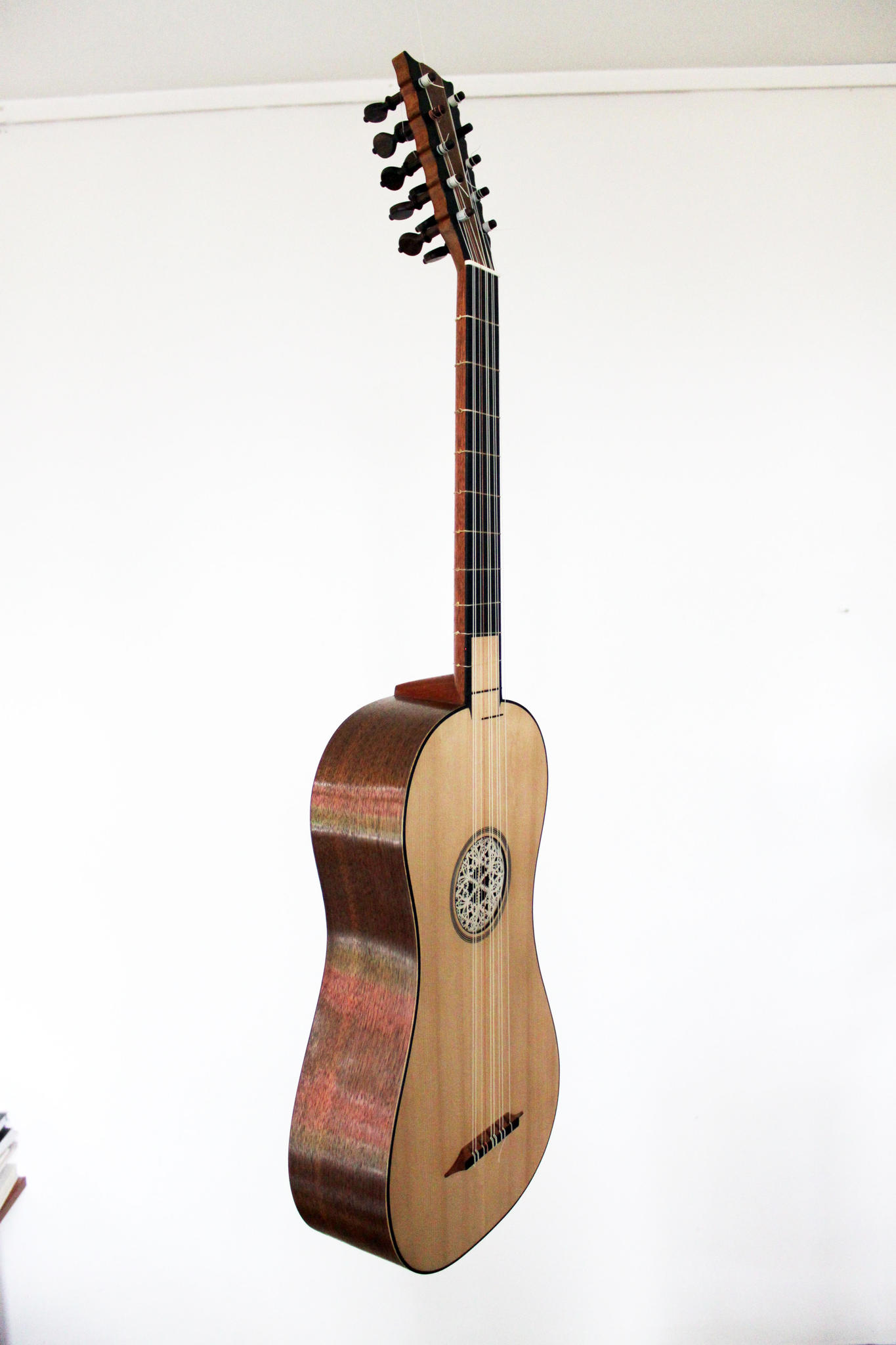

As little historical evidence survives, musicologists are forced to rely on internal evidence, that is, evidence found by studying the music itself. The disposition of the fourth and fifth courses varied unfortunately few composers specified which tuning (here “tuning” is used in a more general sense, perhaps “stringing” is more accurate) was appropriate for their music. (It should be noted that the five courses of the baroque guitar were tuned to the same relative pitches as the first five strings of the modern guitar, although altered tunings were occasionally employed.) Generally the first course was single, while the second and third courses were tuned in unison. Although the intervallic pattern between the five courses remained constant, the courses themselves could be strung with either unisons or octaves. Like most of the plucked string instruments of the period, the guitar was strung with pairs of strings (called “courses”) in a manner similar to that of the modern twelve-string guitar. But, most importantly, the seventeenth-century guitar was strung in a manner that resulted in different musical and technical characteristics. Not only is the baroque guitar lighter and smaller than its more familiar relative, its music is recorded using a fundamentally different form of notation-tablature rather than mensural notation. Although the baroque guitar would appear to be closely related to the six-string guitar, certain characteristics suggest that it might just as well be considered a different instrument altogether. This is due not so much to a deficiency in the music itself, despite Willi Apel’s somewhat misleading remarks, 2 but rather to the design of the seventeenth-century guitar. Of all the modern guitar’s predecessors, the baroque guitar has the largest surviving repertoire, yet the vast majority of it is never played. Music for the Spanish vihuela and guitarra, for example, was not included for this reason.) 1 (The list would be even longer had Danner not limited himself to music for guitars tuned to the same intervallic pattern as the modern instrument. Peter Danner’s important bibliography of guitar tablatures offers ample proof of this claim the revised list includes over three hundred books of renaissance and baroque guitar music. Although baroque guitar solos are occasionally heard in concerts and recordings, transcriptions of lute music make up a larger portion of the guitarist’s “diet.” Despite this misleading set of circumstances, the guitar achieved an enormous amount of popularity in the sixteenth and seventeenth centuries. Judging from the type of early music played by guitarists, it would appear that very little music was actually written for the guitar prior to the adoption of the modern instrument.

The second section, written by my pragmatic colleague, offers a different approach: rather than adapting the music for the guitar, he suggests a way of modifying the guitar in order to better accommodate the music! The first section of this article examines the historical reasons for this unfortunate situation and some of the attempts made by editors at adapting baroque guitar tablature for the modern performer. I have frequently regretted the small part baroque guitar music plays in the repertoire of the classic guitar. Trk 6.The following article is a product of my research and Mr. Gaspar Sanz: Instrucción de Música sobre la Guitarra Española. La Coquina Francesa by Gaspar Sanz, performed by Hopkinson Smith. In terms of right-hand technique, the guitar seems commonly to have combined the “brisé” - broken - textures of finger plucking common to the lute family with strumming techniques that became so characteristic of the later guitar.īaroque Guitar. Trk 12.īaroque guitar repertoire is mostly notated in tablature like that of the lute, although there was a kind of a shorthand chordal notation called “alfabeto” that was sometimes used for song accompaniments.

Allemande (excerpt) from Suite in D minor by Robert de Visée, performed by Nigel North. New York, Metropolitan Museum.īaroque guitar.


 0 kommentar(er)
0 kommentar(er)
